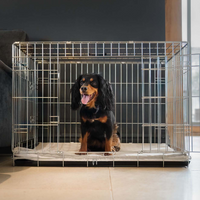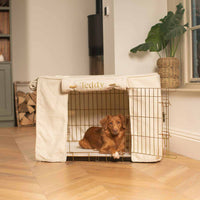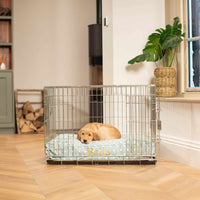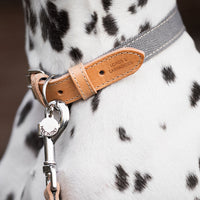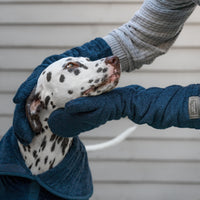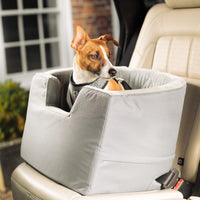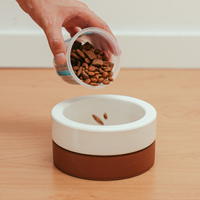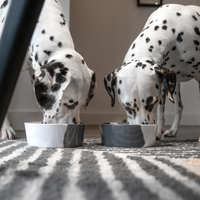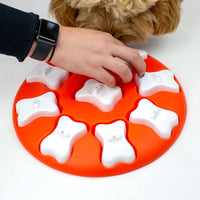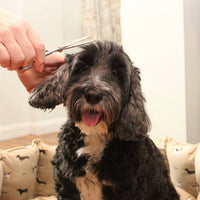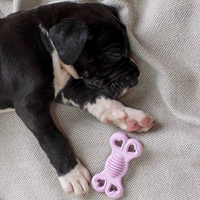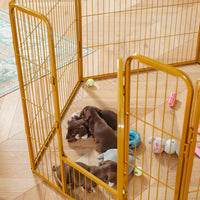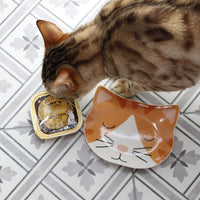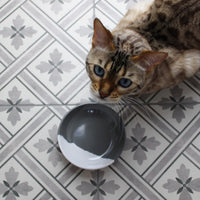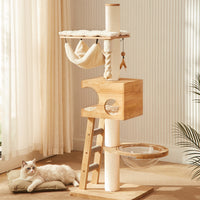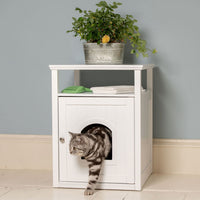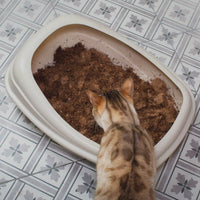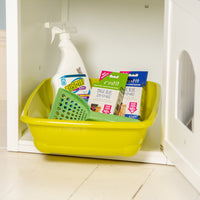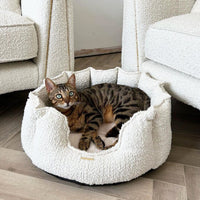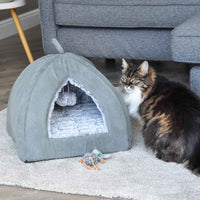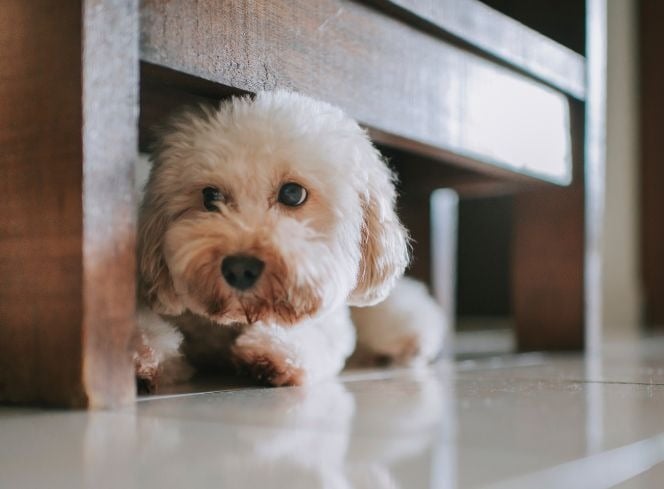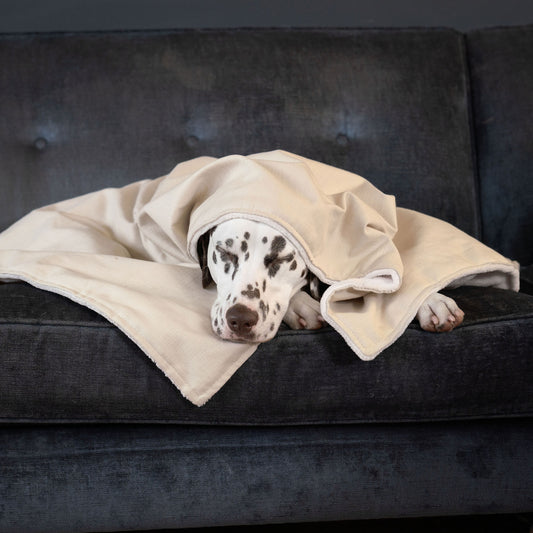As a loving pet owner, you might have wondered why your furry companion chooses to retreat under your bed for slumber instead of in their own cosy bed. While it may seem like a peculiar behaviour, rest assured, there are legitimate reasons behind this canine inclination.
In this blog post, we will explore the various motives that drive dogs to sleep under beds and seek answers to some common questions, such as whether dogs like blankets, if it's safe to let them sleep under the bed, and why they prefer hiding under the covers or duvets.
5 Reasons Your Dog May Be Sleeping Under Your Bed
1. The Natural Instinct Of Shelter
Dogs are descendants of wolves, and their instinct to seek shelter is deeply ingrained in their DNA. Just like wild canines seek out cosy dens to protect themselves from predators and harsh weather, your domesticated pooch instinctively looks for a safe, enclosed space to sleep under, providing them with a sense of security and protection. So your dog choosing to sleep under your bed is simply their natural instincts coming into play.
2. Temperature Regulation
Another reason your dog might prefer sleeping under your bed is temperature regulation. Beds often have open spaces underneath, which provide cooler spots during hot weather. Conversely, during colder seasons, the space under the bed can be warmer, creating a snug spot for your dog to curl up and stay comfortable.

3. Safety and Privacy
Dogs, much like humans, value their personal space. By retreating under your bed, they can enjoy some solitude and privacy, away from the hustle and bustle of the household. This becomes particularly apparent if your dog is feeling anxious or stressed.
4. The Appeal of Familiar Scents
Dogs are incredibly social and affectionate animals, and their desire to be close to their human companions is undeniable. One of the reasons why dogs often choose to sleep under the bed is their instinctual need for closeness and connection with their owners. Your bed, a place where you spend a significant amount of time, is filled with your scent, which is like a comforting and familiar fragrance to your canine friend. By snuggling up under the bed, your dog can feel surrounded by your presence even while resting. This behaviour showcases their loyalty and attachment to you, as they seek solace in being near the person they love and trust the most. It's a heartwarming reminder of the special bond we share with our four-legged friends.
5. Dogs and Blankets: A Cosy Combination
Some dogs love blankets or covers, while others may not be as fond of them. Just like humans, each dog has its own unique preferences. If your dog enjoys the security and warmth of being covered by a blanket, they may seek out the confined space under your bed as a prime napping location. If you want to treat your dog to a new blanket to get cosy with, why not explore our range of luxury blankets? They’re handmade here in our Lincolnshire workshop by our talented seamstresses, and are made using the finest materials so you know they’re best quality for your pup!

Should I Let My Dog Sleep Under the Bed?
Allowing your dog to sleep under the bed is generally safe, as long as there are no hazards or potential dangers in the area. Ensure that the space under your bed is clean, free from sharp objects, and properly ventilated. Additionally, if your dog has any mobility or health issues, you might want to consider providing a more easily accessible sleeping spot.
Why Is My Dog Suddenly Sleeping Under The Bed?
If your dog has suddenly started sleeping under the bed, there could be various reasons behind this behaviour change. It's essential to observe your pet closely and consider any recent changes in their environment or routine. Sudden hiding could indicate stress, fear, or discomfort. In such cases, it's best to consult with a veterinarian or a professional dog behaviourist to identify the underlying cause and provide appropriate support.

How To Tell If My Dog Is Sleeping Or Hiding Under My Bed
If you suspect that your furry friend might be seeking refuge under your bed, there are several telltale signs to look for to determine if they are sleeping or hiding.
- Body Language and Behaviour: If they are lying down comfortably with their eyes closed and seem at ease, chances are they are peacefully snoozing. You might even hear soft snoring or gentle breathing as they drift off to dreamland. On the other hand, if your dog appears tense, anxious, or exhibits fearful behaviour, they could be hiding under the bed as a response to stress or unease. Look for signs like tucked ears, a lowered tail, or avoiding eye contact.
- Consider the context of the situation: If there have been recent changes in the household or if your dog has encountered something frightening, they may choose to retreat under the bed as a coping mechanism.
- Appetite and sleep pattern changes: If your dog’s anxiety is leading to them hiding under the bed, you may notice some other changes to their routine. Their appetite or interest in their food may decrease and their sleep patterns may be disrupted.
By paying attention to their body language and considering the circumstances, you can better understand whether your beloved companion is seeking comfort or seeking solace under the bed

How To Stop My Dog Sleeping Under My Bed
While your dog seeking comfort under your bed is natural, there may be instances when you'd prefer them to sleep elsewhere for various reasons. Perhaps the accumulation of fur is becoming an issue, or you're concerned about potential hygiene concerns. Fortunately, with patience and positive reinforcement, you can gently encourage your furry companion to choose a different sleeping spot. Here are some effective strategies to help redirect your dog's sleeping habits:
-
Introduce a Cosy Dog Bed: Invest in a comfortable and inviting dog bed placed in a quiet and accessible area of your bedroom or another preferred location. Make it attractive by adding their favourite toys or blanket to entice them to use it. We specialise in luxury cosy dog beds, why not browse our range and treat your dog to a new bed?

- Positive Reinforcement: Whenever you catch your dog resting in their new bed or any other location besides under your bed, praise them with enthusiasm and offer small treats as positive reinforcement. Dogs respond well to rewards and will associate the new spot with positive experiences.
- Block Access to Under the Bed: If possible, limit your dog's access to the space under your bed. Use baby gates or furniture to block the area off and make it less appealing as a hiding spot.
-
Create a Safe Space: Dogs often seek shelter under the bed when they feel anxious or stressed. To prevent this, provide a designated "safe space" in your home, like a quiet corner or a crate with comfortable bedding. Encourage your dog to use this space by rewarding them whenever they go there voluntarily. You could look at crate training your dog, crates are designed to create that “safe space” for your dog, helping your dog to find that sense of security they are looking for. Our pet experts have written a guide on how to crate train your dog, with all their tips and tricks to help make the process as easy as possible.

- Consistency is Key: Be patient and consistent in redirecting your dog to their new sleeping area. It may take time for them to break the habit of hiding under the bed, but with persistence, they will learn to embrace their new sleeping spot.
- Seek Professional Advice: If your dog's behaviour persists despite your efforts, consider seeking guidance from a professional dog trainer or animal behaviourist. They can assess your dog's specific needs and tailor a training plan to help modify their sleeping habits.
Conclusion
Your dog's decision to sleep under your bed is a combination of natural instincts, seeking comfort, and a safe haven. Providing your pet with a secure and clean space is essential, as it allows them to indulge in their innate behaviours while ensuring their well-being and contentment.
Remember that each dog is unique, so observe your furry companion's preferences and behaviours to better understand their needs. With love, patience, and a little understanding, you can create an environment where your dog feels happy, safe, and cherished, even if it's under your bed.
If you have more questions or need further assistance regarding your dog's behaviour, consult with a professional veterinarian or animal behaviour specialist to ensure your pet's health and happiness. Happy pet parenting!




